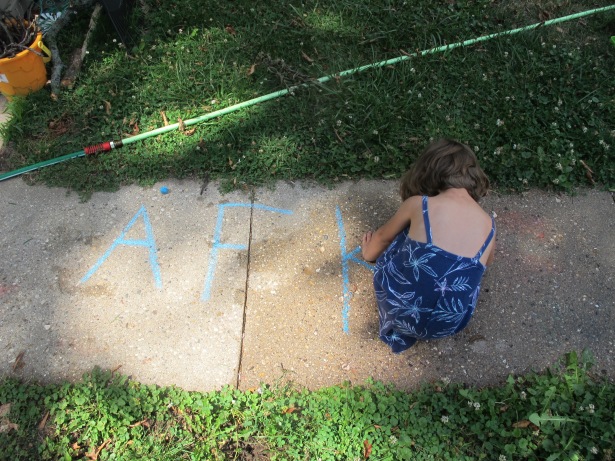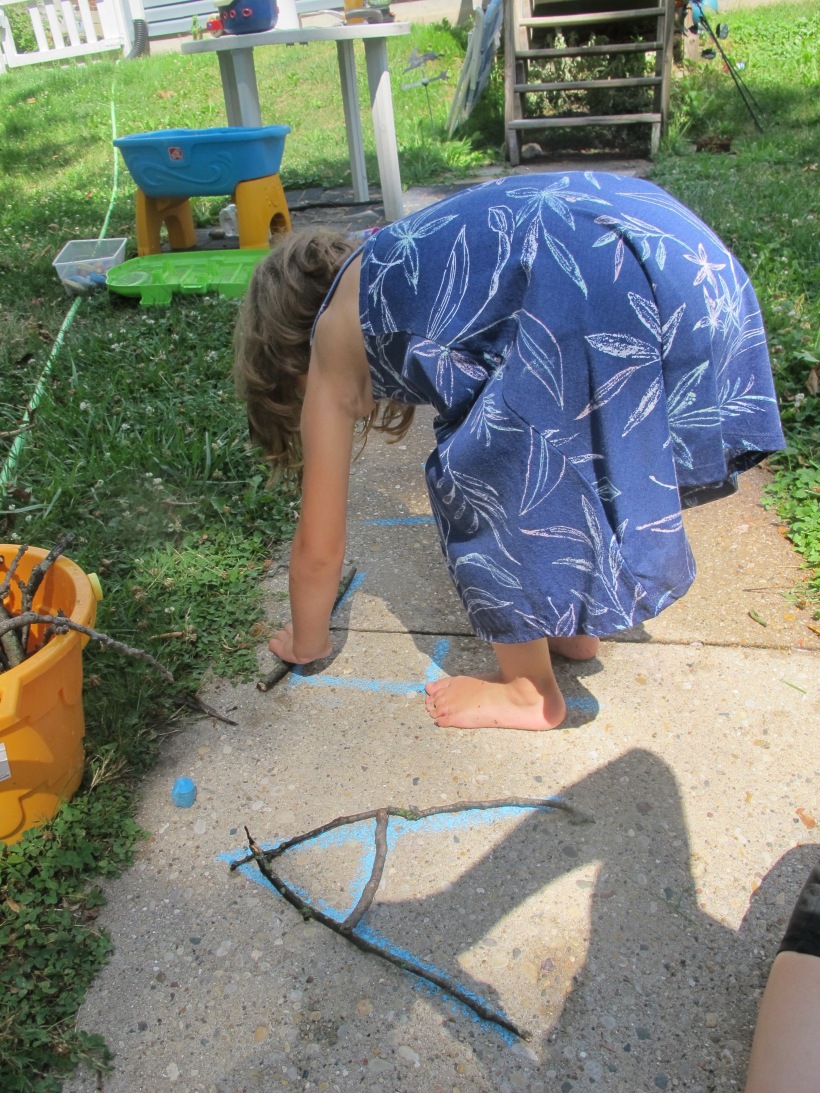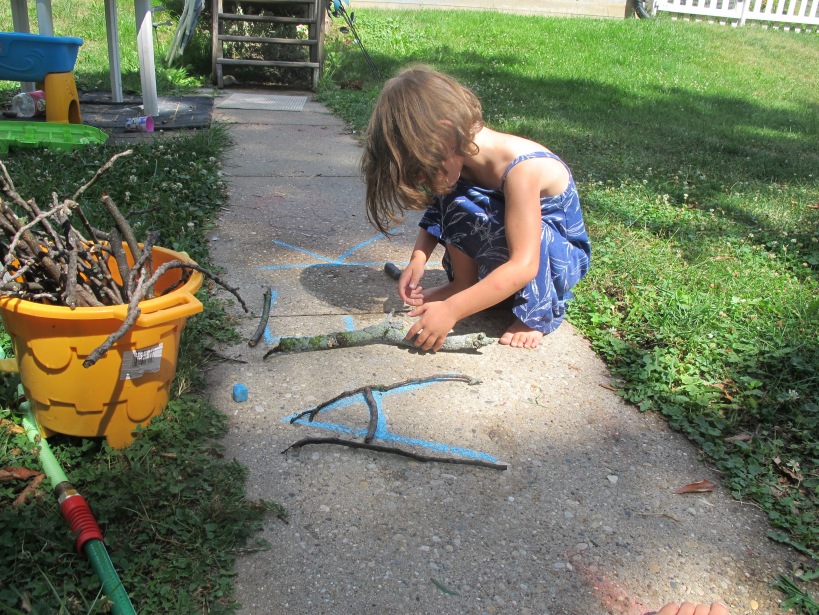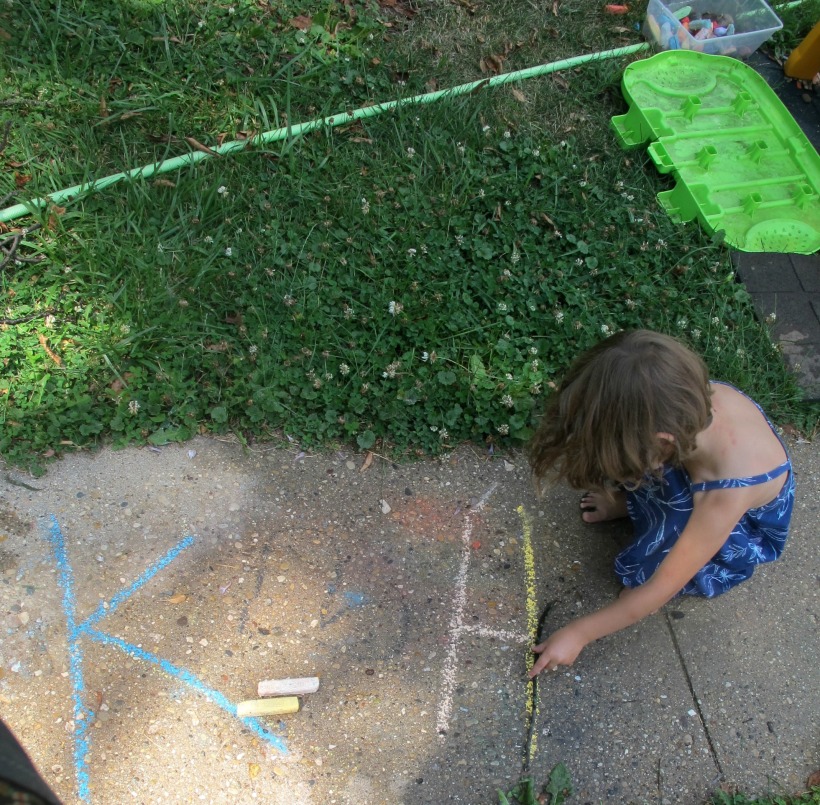Summer months with a busy and active four year old can be both fun and exhausting, sometimes making you wish the school year would be begin a little quicker! I know there are times, at least for me, that it seems like a much better idea to lay down on the couch and put some PBS kids. But, Instead of staying inside, I’d like to share some fun, inexpensive, and (best of all!) educational activities for everyone to enjoy.
Before my family and I moved to the Rockford area, we lived in Chicago for almost a decade. There, I went to college and had my first experience as a teacher. I worked at a school called Velma Thomas Early Childhood Center that was influenced by the Reggio Emilia approach, I will post more on this wonderful teaching practice as time comes. The short explanation: the Reggio approach is a child centered practice that uses the child’s interest to create educational and social learning. I was lucky enough to spend 10 days in Italy when I was in college learning more about this special approach and was more than excited when I was able to put it into practice in my classroom.
Since leaving the early childhood classroom and moving into early elementary, I still take this philosophy with me and use the teachings with both my second grade students and my family. To be able to teach a child fully and truly connect, you must first have an understanding of them and their needs.
Another key “teacher” in the Reggio Emilia approach is nature. Nature is the best tool you have to teach you child about the world around them. For the fun little lesson that I am going to share with you today, we use two simple materials: chalk and sticks.
My daughter loves chalk. She has also taken to the many sticks that you can find laying around our yard from that lovely hickory tree. To avoid problems when we mow the lawn, we started collecting the sticks in a bucket. Perfect for exploration and learning fun!
First, take a piece of chalk and write a few letters of the alphabet on the sidewalk big enough for the sticks you have but not too big so your child will get tired quickly. I went over the letters I wrote three times to make sure they were bold enough for her to see. Notice I did not do the alphabet in order. One reason for this is because you want your child to memorize the letters themselves and NOT just the pattern of the alphabet. I usually pick them at random, but if you are starting out fresh, I would start with the letters in your child’s first name. They learn to recognize their name fairly quickly and it’s an important first step!

After doing a small demonstration, She was ready to begin working on her own! I never dictate which sticks she should use or whether it goes off the lines. Something that is important to remember about learning letters and numbers is they are symbols. Have you ever looked at writing that is in a different language and your brain sort panics for a moment? That is how children see letters and numbers before they are developmentally ready to understand what the symbols mean. Start slow, repeat often, and never get discouraged! Showing frustration with learning will only make children feel unsuccessful.


After working and tracing over the other letters, she was ready to try and write her own. With a little help, she wrote the letter “H” using two different colored chalks then set to work covering it over with the sticks!
What does this activity help my child learn? It gives your child an opportunity to explore and experiment with letters in a different way. Adding nature into the mix always helps solidify concepts in a more meaningful and concrete manner. While doing this with my child, We said the letter name and the sound. Nothing else. I don’t like to add things that the letter begins with for one important reason: you child will ALWAYS repeat that sentence! “A is for apple, /a/ /a/ /a/” This does not mean they have an understanding of the letter, sound, or word, just a good memory!
Activity stats
- Fine motor skills- grasping, writing
- Hand-eye coordination- placing sticks over lines
- Phonemic awareness- identifying letters, sounds